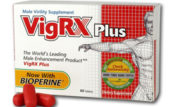 The best advice I’ve heard about tattoos came from an artist at one of the first studios I checked out prior to getting inked. I guess I looked nervous, having been in the studio for over an hour as I tried to figure which tattoo I’d get and make part of me forever.
The best advice I’ve heard about tattoos came from an artist at one of the first studios I checked out prior to getting inked. I guess I looked nervous, having been in the studio for over an hour as I tried to figure which tattoo I’d get and make part of me forever.
Sensing my indecision, he told be to relax and wait a year after I chose a design. Twelve months later, if I still wanted it, I’d know it was a keeper. If not, it would be for the best that I didn’t get it. Tattoos linger, after all. They don’t wash off in the shower
That’s sound advice. Tattoos aren’t new, but they’re getting more popular by the year. Roughly one in four people between 10 and 30 are inked. Those stats lean even more towards the fairer sex than the tattooed sailor of your grandparent’s era – 65% of people with tattoos are women, with designs as varied as the motivations behind them.
Tattoo Ideas: What and Where
A tattoo is an expression of who you are, and while there is nothing wrong with a tasteful tattoo, you’ll want to think about what you’re getting and on which body part you’ll get it.
You might also want to think about who will see the tattoo. They’re generally accepted in North America, but use common sense. Tattoos on the neck are borderline questionable, and tattoos on the face are an epic fail. Just ask the guy with the Mitt Romney face tattoo if he has any regrets.
As a general guideline, you’re saying the following, depending on body location, according to the owner of a prominent American tattoo studio:
The Back – I’m SEXY
The Neck – I’m EDGY
The Forearm – I’m EGOTISTICAL
The Calves – I’m POWERFUL
The Chest – I’m BOLD
The Ribs – I’m ROMANTIC
The Wrist – I’m CONSERVATIVE
The Foot – I’m NON-COMMITTAL
Note that some areas are definite ‘job-killers‘ – that’s primarily the face, though the neck and hands are cutting it close. Some guys get tats on their biceps as well. While you can add your own interpretation to that, I get a kick out of Gawker’s definition of what it means.
DO: Think it Through
You’ll be wearing your tattoo for a while. Don’t rush into it – think it through, with at least six months, and preferably a year, to sit on the design you have in mind.
Think about the tattoo you want. It should mean something personal and be timeless. Personally, I noticed a girl at the gym last week with an ankle tattoo of her dog – a golden retriever – with “Morley” under his image. I commented how much I liked it. She told me he’d passed away and the tattoo was her way of remembering him. A fitting tattoo that she’ll never regret.
Tattoos with red ink tend to have the most allergic reactions.
One artist says you’ll know it’s the right design when it feels like the tattoo is already there. If you have to think hard about what you want, you’re not ready yet. What would your future self want? Keep it simple – you may be better off with one large tattoo rather than several smaller ones.
As they say in the tattoo industry – “think before you ink”, and you’re less likely to find yourself among the roughly one-third of folks who regret their tattoos, many of whom got their tattoos before 16.
 DON’T: Drink the Night Before
DON’T: Drink the Night Before
We’ve all seen The Hangover movies, but your chances of waking up after a bender with a sporadic tattoo are, fortunately, close to zero. Most tattoo studios simply will not tattoo anyone who’s drunk. That extends to people who’ve quaffed a beer the previous night too, and even to aspirin.
They both thin the blood, which can trigger excess bleeding and siphon up to half the ink out of the tattoo.
You’re at higher risk of scarring, too, if you get a tat while drunk, and risk contracting an infectious disease like hepatitis B. In fact, you run the same risks if you drink after the session – which leads some tattoo artists to recommend abstaining from booze up to five days later to allow the body to properly heal.
Granted, a beer might put you at ease and take your mind off the discomfort, so find support in other ways. Bring a friend to cheer you on, or take your iPod and listen to gentle music. Save the drinking until roughly five days later. Then tear it up and celebrate your new tattoo over a round with your friends.
DO: Research the Studio
Research the studio while you’re at it, and the artists who work there. Tattoo studios can be a breeding ground for germs and bacteria, to say nothing of the quality of work they put out. So do your homework. Check review sites like Yelp and be objective. Don’t go to a particular studio because your friends heard it was good unless they had a good experience at the place.
Look at portfolios too. You’ll be wearing the artist’s handiwork for the rest of your life. Don’t get marked by an artist if their work doesn’t inspire you.
Avoid laser removal of tattoos over moles because the laser can alter the pigment that doctors use to look for melanoma.
Visit the studio in person. Cleanliness counts here – are there plastic coverings on anything the employees would touch? Hint: a clean bathroom should tell you what you need to know. Both disposable and steel tools are fine, but the latter must be sterilized in a clean room with an ultrasonic and autoclave.
The artist you choose should have at least two years’ experience. Note the vibe they give off; is tattooing their job or their inspiration? Some artists specialize in areas like Japanese art or portraits. Your best move is to find an artist with a good portfolio of work similar to what you want. They should be friendly and have ideas how to make your design stand out and look amazing.
DON’T: Tattoo a Mole
While tattoos generally don’t pose a health risk, you should avoid getting a tattoo on a mole or birthmark. That’s according to researchers who published a 2013 study which cites that tattoos can make it difficult to detect developing skin cancer. As well, it’s best to avoid laser removal of tattoos over moles because the laser can alter the pigment that doctors use to look for melanoma.
The study is published in the journal JAMA Dermatology, in which German researchers point to a young man who developed melanoma on a pre-existing lesion within a tattoo, during and between phases of laser tattoo removal. He’s not alone – researchers note 16 other cases of melanoma developing within tattoos documented in English-language journals. A dermatologist who observed the study commented that half of melanomas develop in pre-existing moles. Tattoos make it more difficult to spot potential dangerous growths on the skin, and the ink can interfere with the tools used to detect them.
A dermatologist who observed the study commented that half of melanomas develop in pre-existing moles. Tattoos make it more difficult to spot potential dangerous growths on the skin, and the ink can interfere with the tools used to detect them.
Their take-away message: don’t tattoo over a mole. If you already have, avoid laser removal, or at least have the mole biopsied before you do. Try to see a board-certified dermatologist twice a year rather than once if your tattoo covers many moles. Lesions should be removed before laser removal on any suspicions of developing skin cancer.
Tattoos and Skin Care
OK, so you’re ready for ink. You chose a design 12 months ago and sat on it (right?). Now it’s a year later and you’ve done your homework. You know the studio and chose your artist. You’ll hold off the alcohol and you won’t tattoo a mole. So enough said. Let’s do this!
Most people get tattooed and have no problems for their efforts. Tattoo problems tend to be minor, like mild skin reactions, though they can lead to allergic reactions. In rare cases, they can lead to scarring and spread of hepatitis B and C.
Tattoos with red ink tend to have the most allergic reactions.
You should be able to sidestep most tattoo problems with the steps we’ve discussed in this article. And you’ll have a better tattoo for the experience if you care for it in the days following your session with some basic tattoo skin care tips. So follow the artist’s instructions, if he/she gave any, and:
Stop Bleeding – It’s fairly common for tattoos to bleed in the first 24 hours, though not excessively. Minimize bleeding with pressure to the wound. You might also notice clear, yellow or blood-tinged liquid around the wound for the first several days. No worries, that’s normal.
Use a Cold Pack – Apply a cold pack to the wound to reduce swelling and itching. Don’t apply ice directly to the skin because it may cause tissue damage. Rather, put a layer of fabric between the ice and the wound. Take an Antihistamine – Your tattoo artist might recommend an antihistamine to reduce hives and itching. Follow the instructions on the label, and avoid harsh soaps, chemicals and detergents.
Take an Antihistamine – Your tattoo artist might recommend an antihistamine to reduce hives and itching. Follow the instructions on the label, and avoid harsh soaps, chemicals and detergents.
Keep the Wound Moist – Speed healing with an antibiotic cream like Polysporin and a non-stick bandage. Put the ointment on the bandage first, to avoid pain, and remove the bandage and wash off the cream if you develop a rash. Try a different cream later.
Be sure to change the bandage once a day and every time it gets wet. Soak the bandage in warm water first if it sticks. Open the wound to the air, too, with the bandage off, to assist with the healing process, and consult with your doctor regarding medications or anything related to gettting a tattoo if you’re pregnant or have any specific health concerns.
Give it time and be gentle for the first few days. You’ll be rewarded with a pleasing tattoo that you’ll keep forever, and assuming you’ve practiced the dos and don’ts of tattoos discussed in this article, your tattoo will stand out and be an integral piece of who you are.

 DON’T: Drink the Night Before
DON’T: Drink the Night Before


